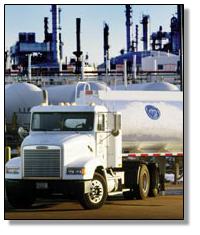Gasoline and Diesel Fuel Supply Outlook
Gasoline
Even though Memorial Day is months away, there is concern regarding gasoline supplies as the summer driving season approaches. The summer driving season starts on Memorial Day weekend and ends Labor Day weekend.

At the end of December 2005, the national gasoline inventory level was in the bottom of the normal range. However, Nebraska, which is in the Midwest Region, had inventory levels above the normal range.
During the last week of 2005, refiners across the nation produced nearly 9 million barrels per day of gasoline, but demand was still well over 9 million barrels per day, which is very high for mid-winter. Gasoline imports continued to decrease. Lastly, a heavy schedule of refinery maintenance was in place for the first quarter of 2006. Each of these factors contributes to supply concerns.
One final piece complicates the supply picture: the final phase-in of low-sulfur gasoline which began January 1, 2006. The sulfur level in gasoline is being lowered from an average 300 parts per million to a maximum average 30 parts per million. The phase-in affects gasoline produced outside of the Rocky Mountain region. All gasoline must be in compliance by 2008. The estimated cost increase for producing and distributing low-sulfur gasoline is about 1 to 2 cents a gallon.
Removal of Methyl Tertiary Butyl Ether, or MTBE, as a blending component from motor gasoline — another pending change — will likely increase gasoline prices and possibly lead to greater price volatility.
How long will prices continue to increase? The Energy Information Administration expects prices to increase on a monthly average basis for at least the first half of 2006. For now, it does not appear retail gasoline prices will average below $2 a gallon anytime soon. Barring a bumpy transition to the new gasoline formulations taking place, or a major supply disruption, $3 a gallon is not likely either.
Diesel Fuel
At the end of 2005, the national diesel supply levels were in the normal range. The Midwest Region was below the normal range for that time of year. There was a significant decline in diesel demand at the end of the year, although demand is up 4.1 percent from last year.